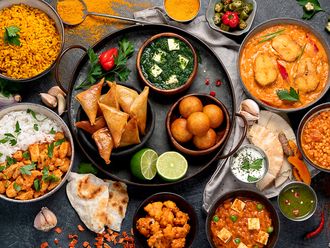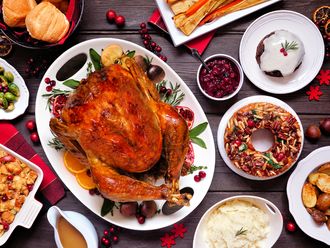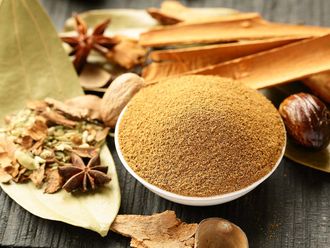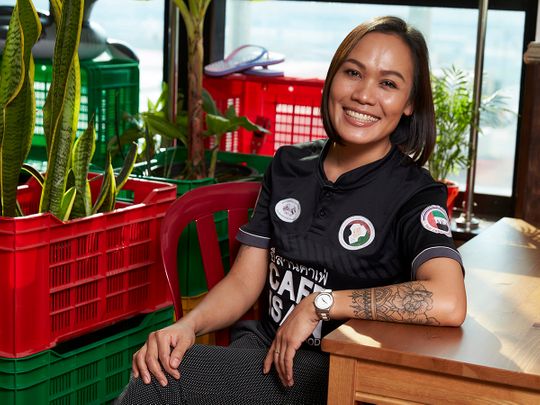
Our pasts tend to define us – both in good and bad ways. And nothing is more telling of that than food – how we cook, create and consume.
Our memories connect us with what we create and in the case of Patthama Chaklang aka Chef New, Head Chef and Co-owner of Dubai-based Thai restaurant Café Isan, it is the earthy existence of a childhood spent on a farm in rural Thailand that have found echoes in her culinary journey of today.
She is vigorously pounding Thai red bird’s eye chillies and garlic in a mortar and pestle. Then she adds ingredients that are distinctly different in taste such as lime juice, palm sugar, peanuts, shrimps, fish sauce, shredded unripe papaya and tomato.
The outcome is called Som Tam or papaya salad, one of the most popular Thai dishes offering a tsunami of flavours in the mouth. The level of spice from red bird’s eye chilli is perfectly balanced by the sweetness of palm sugar and sourness of lime juice, blending well with the saltiness of the fish sauce.
“The soul of Thai food lies in the ingredients and how we connect one with the other to create a burst of flavours in the mouth,” says New. “From spicy to sweet, sour and salty we can cook up a storm by using some basic yet key ingredients including kaffir lime, galangal, red onion, lemongrass, chilli and palm sugar.” Not to forget the fish sauce, of course.
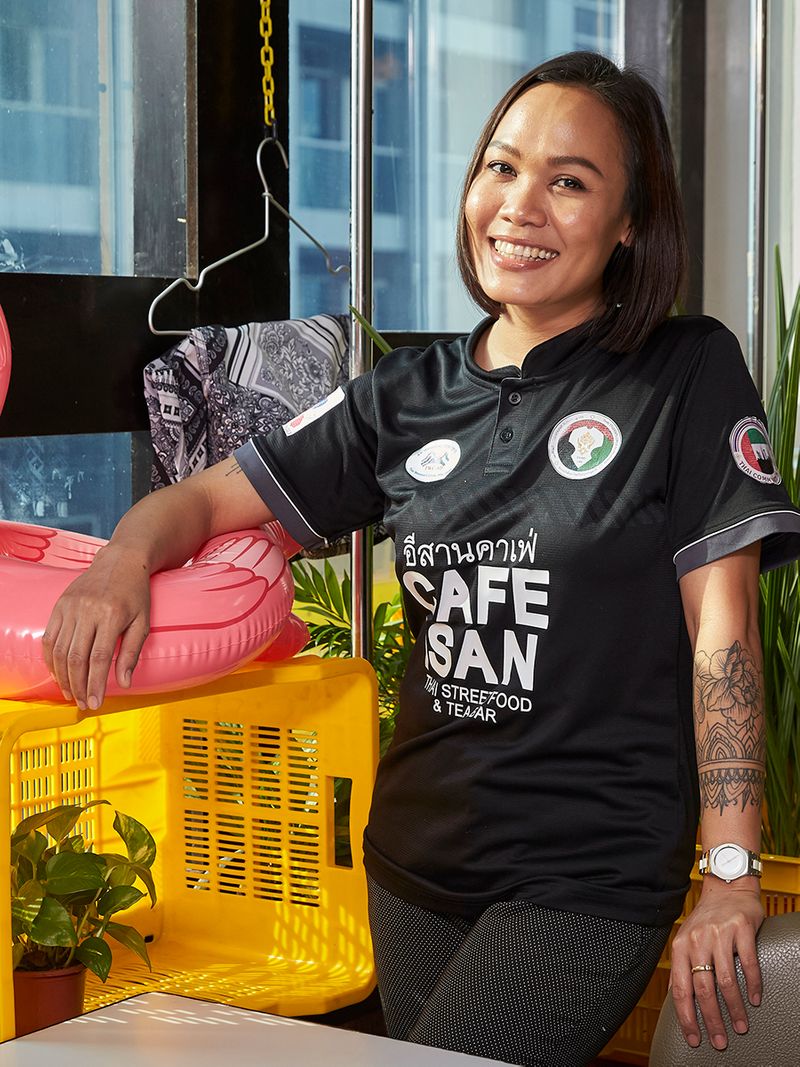
The magic of ingredients
Anyone who loves to cook will agree that it is crucial to connect with the ingredients and understand how one reacts with the other, quite like an orchestra.
For New, this connection with ingredients started when she was only three years old. Growing up at Beung Kan, Isan, in Thailand New would follow her mother around the family farm. Gradually she started noticing how fruits, vegetables and herbs grew and the effort that went behind growing each plant.
“Although I did not cook until much older, I was the designated picker of our home. My mother and brothers taught me how to pick ingredients and prepare everything as they cooked. That’s how I developed a connection with the ingredients that were used for cooking, eventually building a sense of comfort. Growing up on our farm has shaped me into the chef I am today. I learnt by tasting ingredients, understanding their distinct flavours and how they reacted when mixed.”
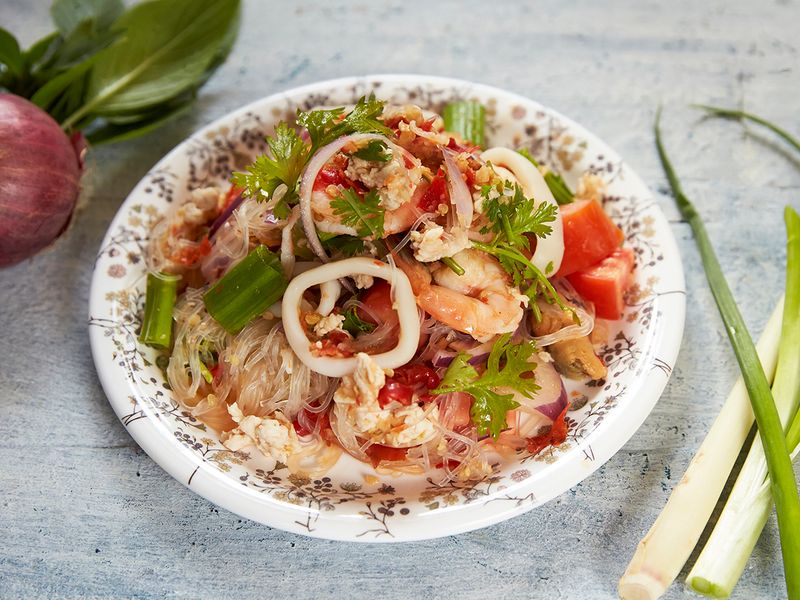
Sometimes I fail to bring out the exact flavours or textures but having an idea of the way they work together helps me to eventually get it right. The first time I made a Massaman curry (a yellow Thai curry), the potatoes became mushy as I had first steamed them before adding in the curry. Next time as I fried the potatoes, the texture became perfect. Trial-and-error experimenting, coupled with the knowledge of ingredients helps me to instinctively add my twists to certain Thai dishes.
For example, to get the flavours right in a Thai soup, a big part is to pound the ingredients together, says New.
“I like to start the process by pounding together chilli, garlic, coriander roots, black pepper with the protein of choice and salt in a mortar and pestle. As the juices mix, the flavours blend in beautifully. Then the mixture is boiled in water/stock along with vegetables to make a flavourful soup.
“Sometimes I fail to bring out the exact flavours or textures but having an idea of the way they work together helps me to eventually get it right. The first time I made a Massaman curry (a yellow Thai curry), the potatoes became mushy as I had first steamed them before adding in the curry. Next time as I fried the potatoes, the texture became perfect. Trial-and-error experimenting, coupled with the knowledge of ingredients helps me to instinctively add my twists to certain Thai dishes.”
Waste not, want not
Another thing happens when a chef truly connects with ingredients, hardly anything is ever wasted in the kitchen.
Coming from a humble farming background, New’s family also strongly believed in using every ingredient consciously. What’s grown with love must never be thrown away was a strict unsaid rule.
“For example, we pound fresh coriander roots to cook Tom Yum Soup (hot and sour soup), while the leaves are used for garnishing. While we use broccoli florets in stir-fries, the stems are used to cook the stock for vegetable soups. If there are leftover vegetables in the kitchen, we turn them into pickles. Even chicken bones are used to make a stock for soups.”
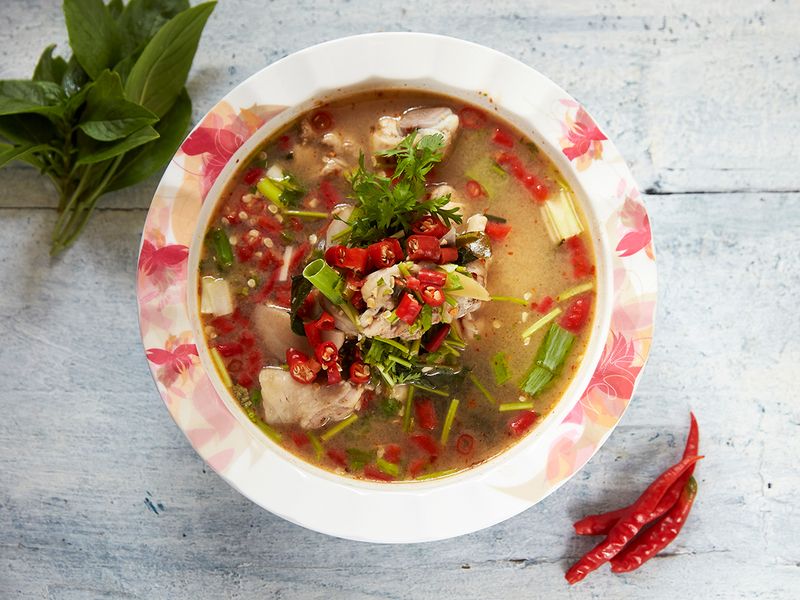
Similarly, wasting rice is culturally unacceptable in Thailand.
“We never throw away rice,” New agrees. A staple, rice is served with various dishes ranging from Pad Krapow Gai (stir-fried chicken with holy basil), Thai curries, Khai Chiao (Thai-style omelette) as well as desserts.
“In Thailand, we mainly use two variants long grained Jasmine and sticky rice. In Isan, we prefer sticky rice over jasmine rice. One of my earliest and fondest memories is of my aunt using leftover sticky rice from the previous day to make our favourite Khao Niao Mamuang or mango sticky rice ice-cream. Sometimes we also turned the leftover sticky rice into a burger patty and had it with a fried egg, fish sauce and spicy chili sauce.”
Simple yet flavourful
Today Thai food has gained popularity across the world for its simple yet unique flavours alternating from spicy to sweet, salty and sour – sometimes all in one dish.
On that note, here are the recipes for mixed glass noodles salad and spicy chicken bone soup from Chef New that she describes as “simple, fast and flavourful” and comfo



